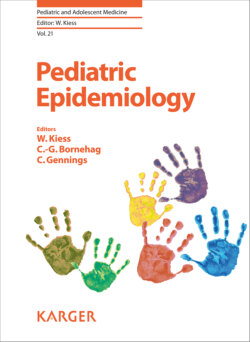Читать книгу Pediatric Epidemiology - Группа авторов - Страница 30
На сайте Литреса книга снята с продажи.
Specific Topics Neglect
ОглавлениеWithin the field of maltreatment research, scientific studies regarding child neglect have been clearly underrepresented, and researchers have pointed out a “neglect of neglect.” There are many reasons for this. Historically it has been easier to observe and diagnose physical abuse. In addition, there is no common consensus about the definition or definitions of neglect. Child neglect may, in fact, be a composite of different types of omission on the part of the caregiver, or of unmet needs seen from the child’s perspective. These deficiencies can also be seen along a continuum of severity, frequency and chronicity, and may have varying impact depending on the child’s age and individual characteristics. The term neglect includes, but is not limited to, the following:
•Neglect of basic needs such as nutrition and shelter
•Medical neglect, where a child’s medical needs with regard to accessing medical or dental services, preventive health services or treatment with prescribed medicines are not met
•Emotional neglect, where a child’s needs for love, attention and communication are not met by the caregiver. Exposing the child to violence between adults in the home may be seen as a form of both emotional violence and emotional neglect
•Educational neglect, where the caregiver fails to ensure that the child attends school or support the child’s academic performance.
A meta-analytic review from 2013 looked into studies between 1980 and 2007 of 13 independent samples of physical neglect and 16 independent samples of emotional neglect, both with almost 60,000 participants [21]. The overall estimated prevalence was 163/1,000 for physical neglect and 184/1,000 for emotional neglect, with no apparent gender differences. The following important research problems were pointed out:
•The influence of research design on the prevalence of physical neglect was more pronounced than on the prevalence of emotional neglect. Studies on physical neglect in “low-resource” countries were conspicuously absent.
•The use of validated instruments yielded a significantly higher prevalence for physical neglect than the use of non-validated instruments.
•The combined prevalence of different forms of physical neglect was lower when one or 2 questions were used than when 3 or more questions were used. There was a significant increase of reported prevalence with an increasing number of questions.
•The combined prevalence in studies using convenience samples was significantly higher than that of studies with randomized samples
For studies of emotional neglect
•No differences in the reported prevalence were found between studies that reported on witnessing domestic violence only and studies that used a more comprehensive definition of emotional neglect
•Interviews gave higher prevalence than questionnaires
•Studies with a low to moderate response rate gave significantly lower prevalence rates of emotional neglect than studies with a high response rate.
Emotional neglect may be more difficult to measure than physical neglect, as the construct of emotional neglect may be more open to personal interpretation. To overcome this problem, it is probably important to use multiple, behaviourally specific questions to rule out at least part of the subjectivity [21].
